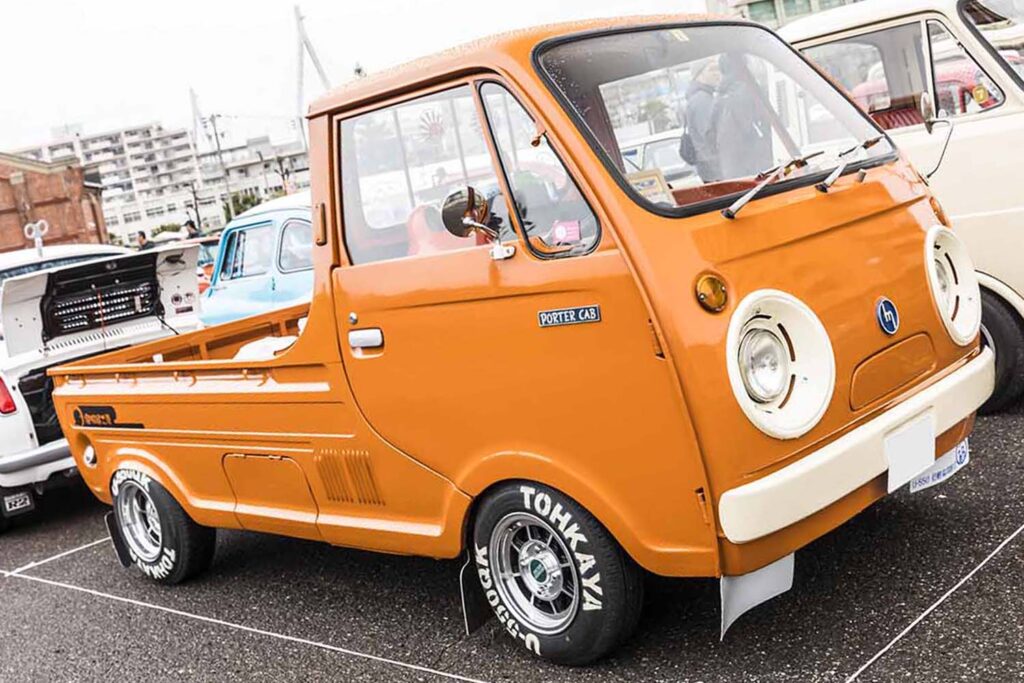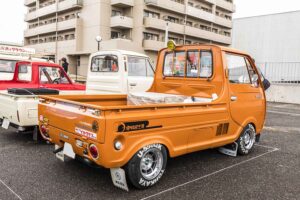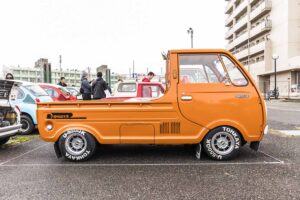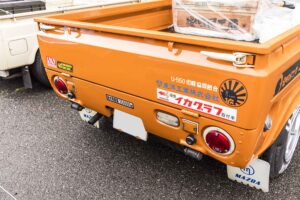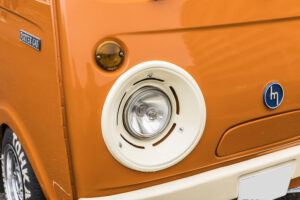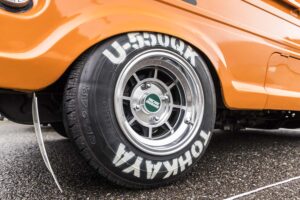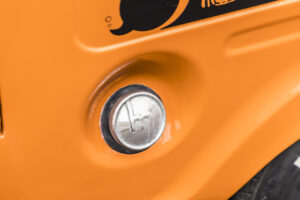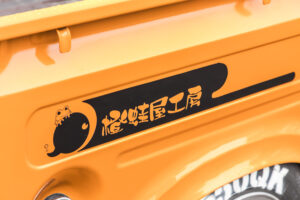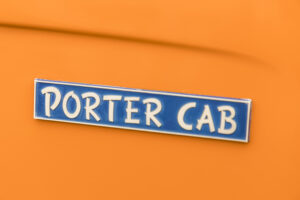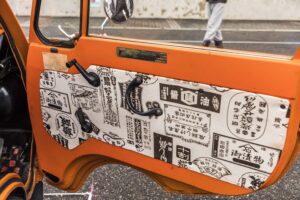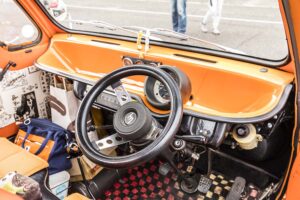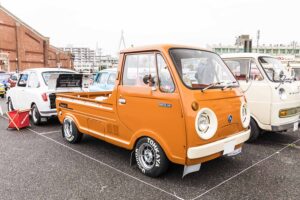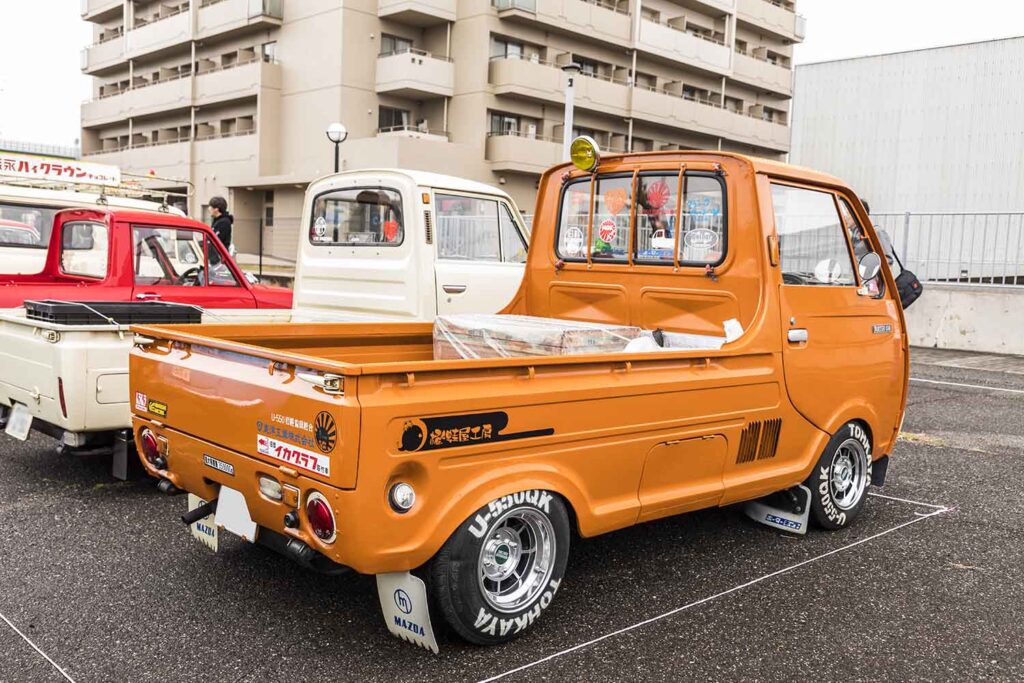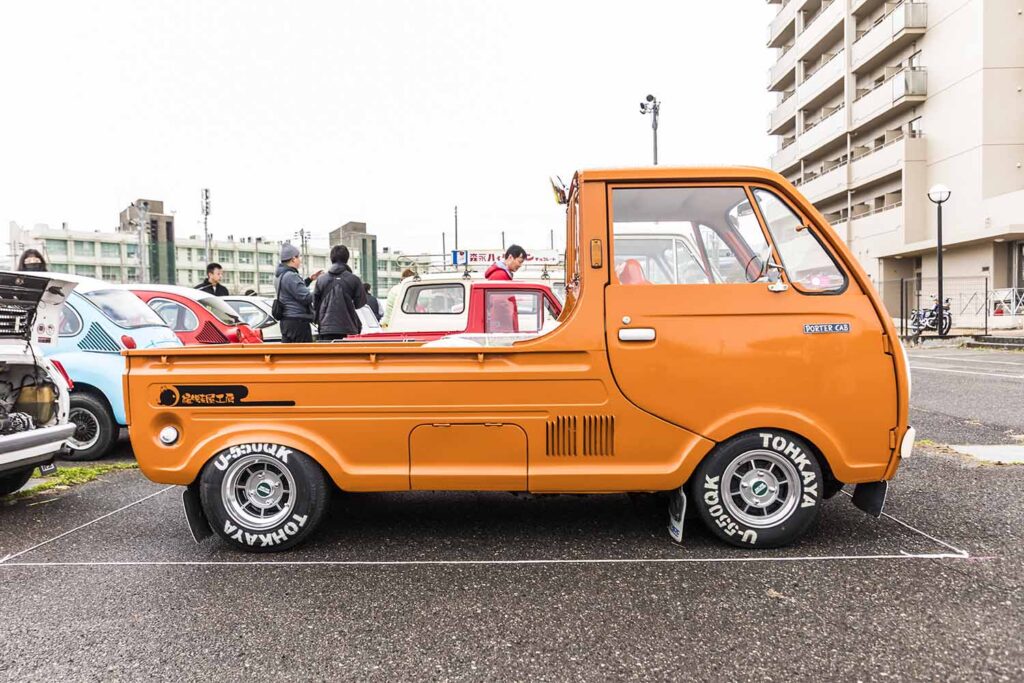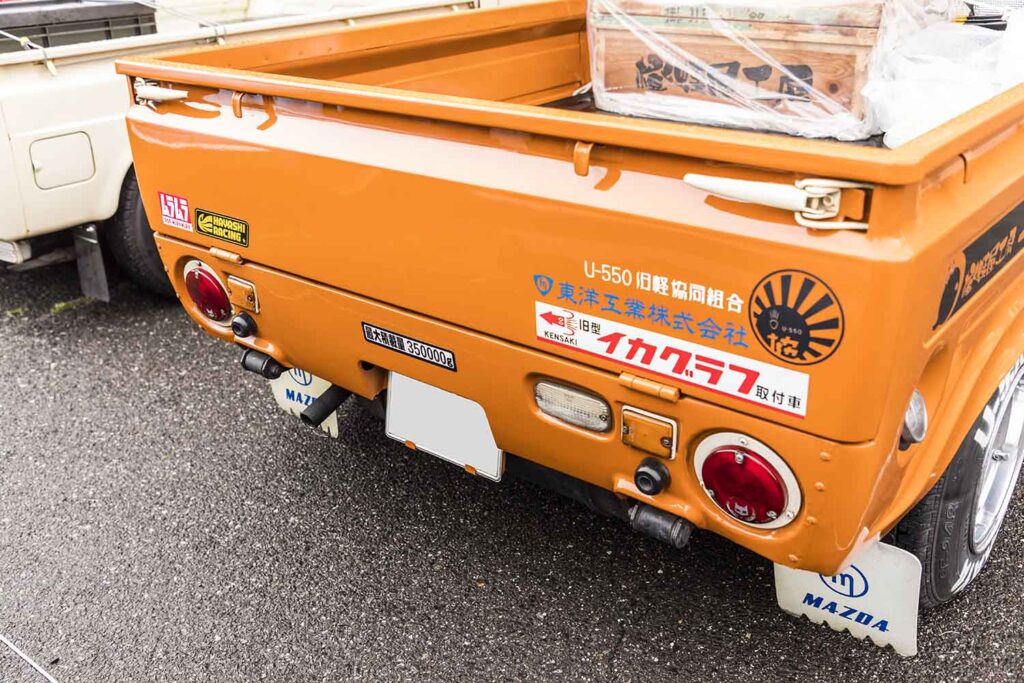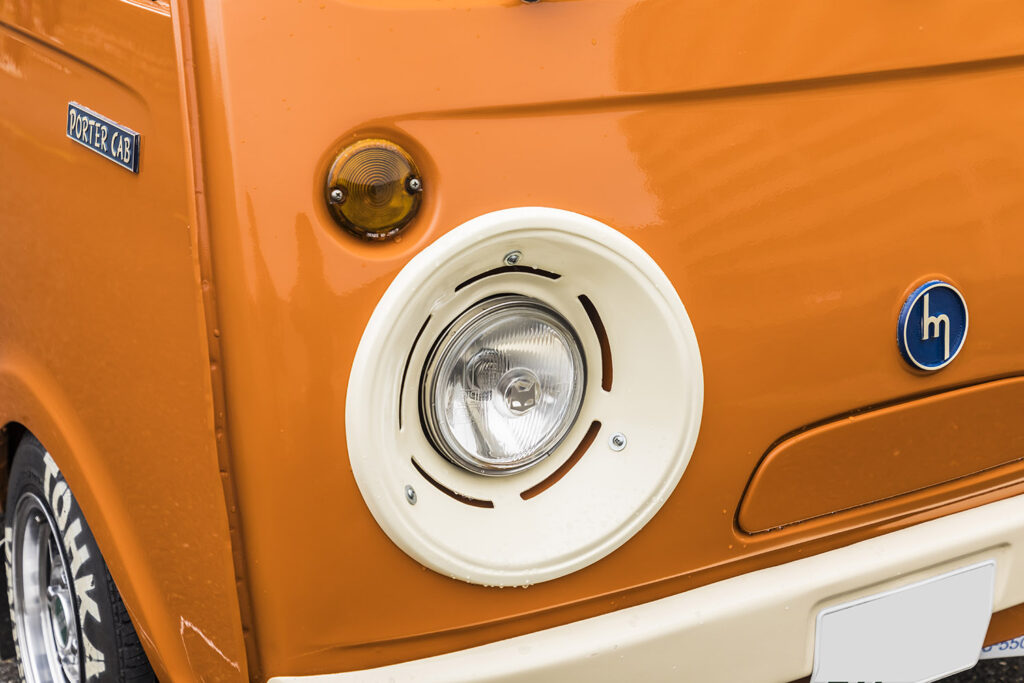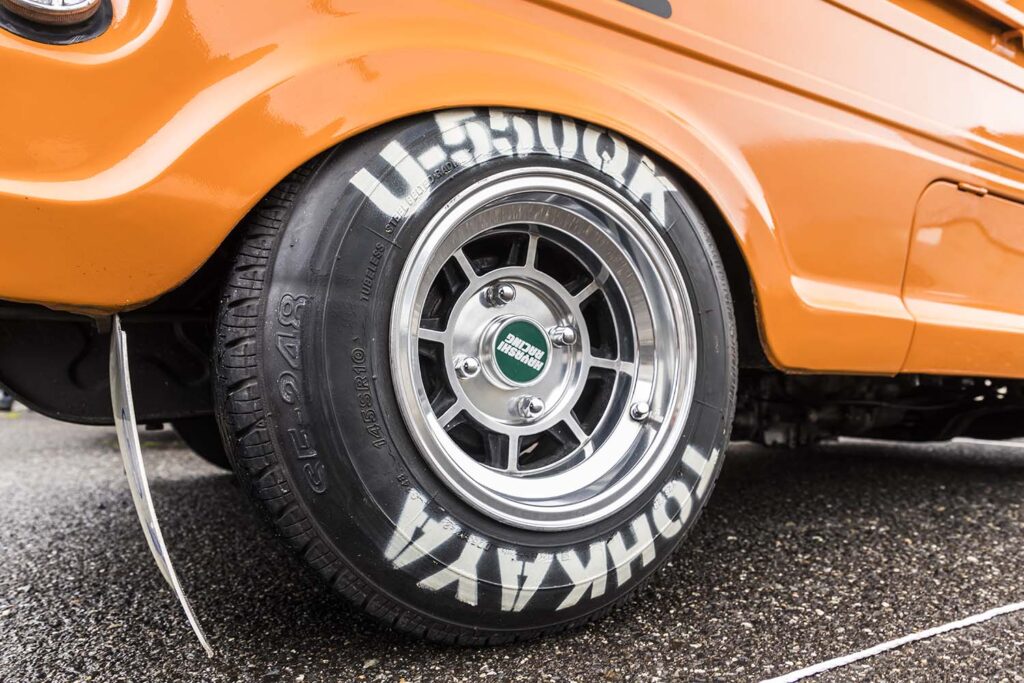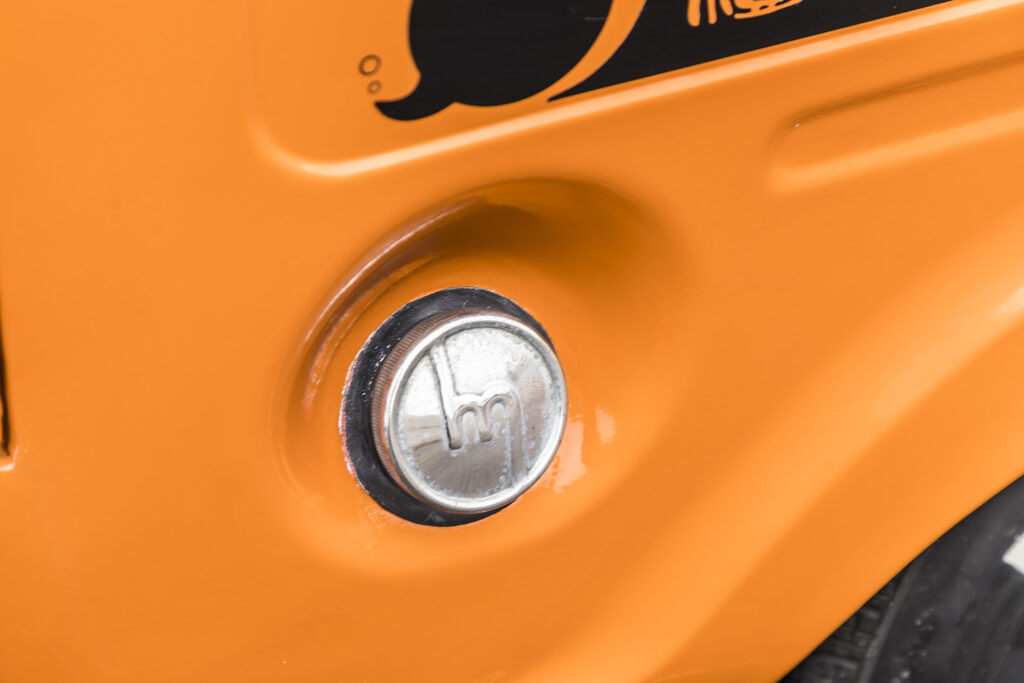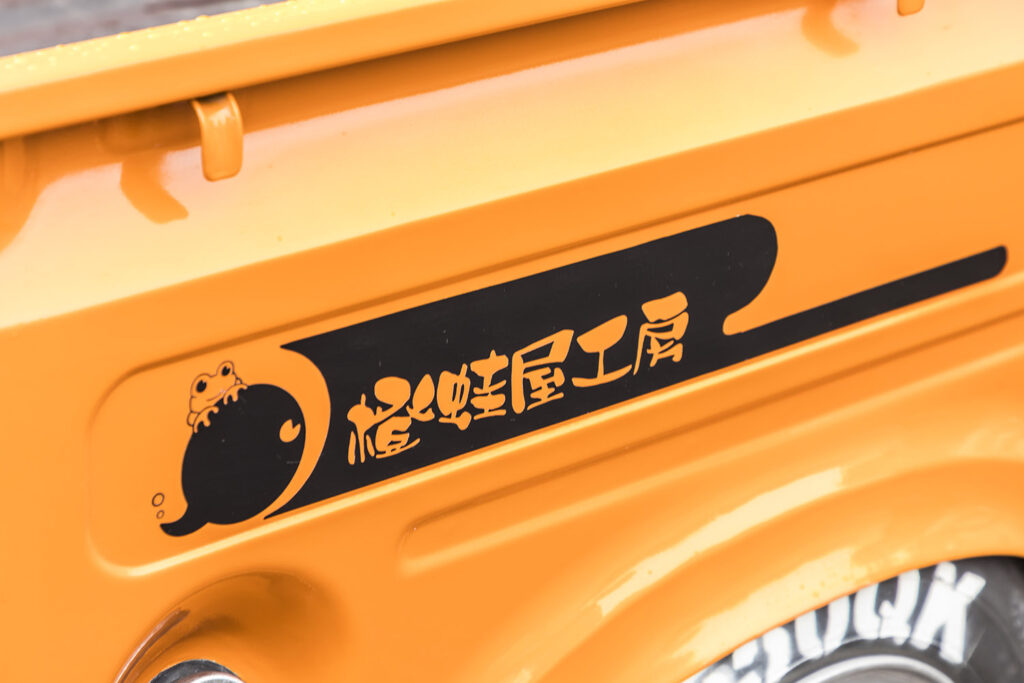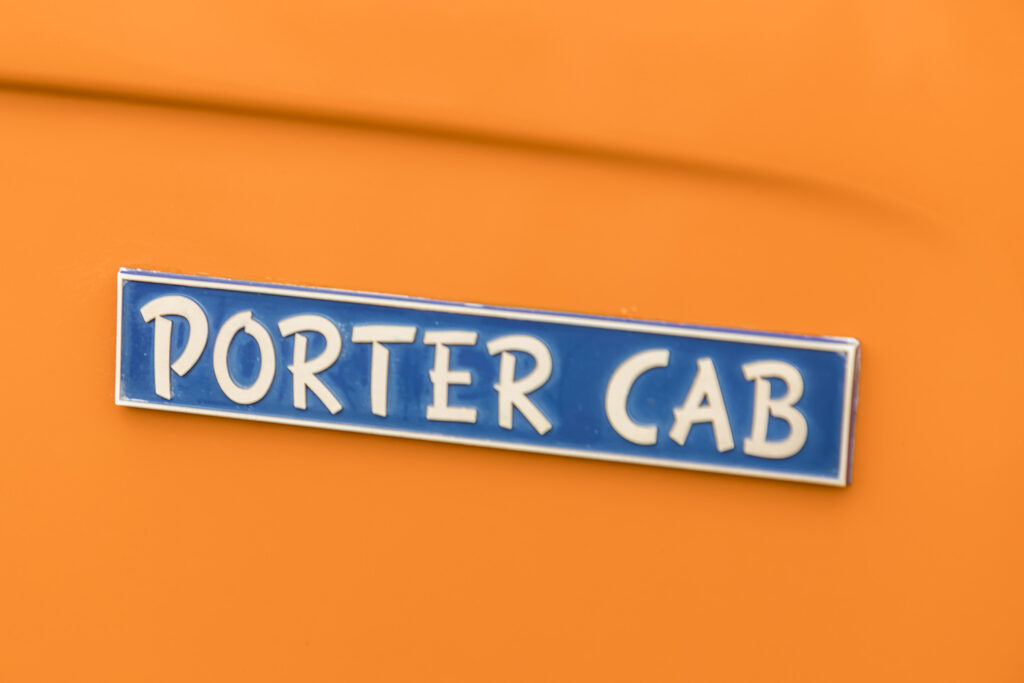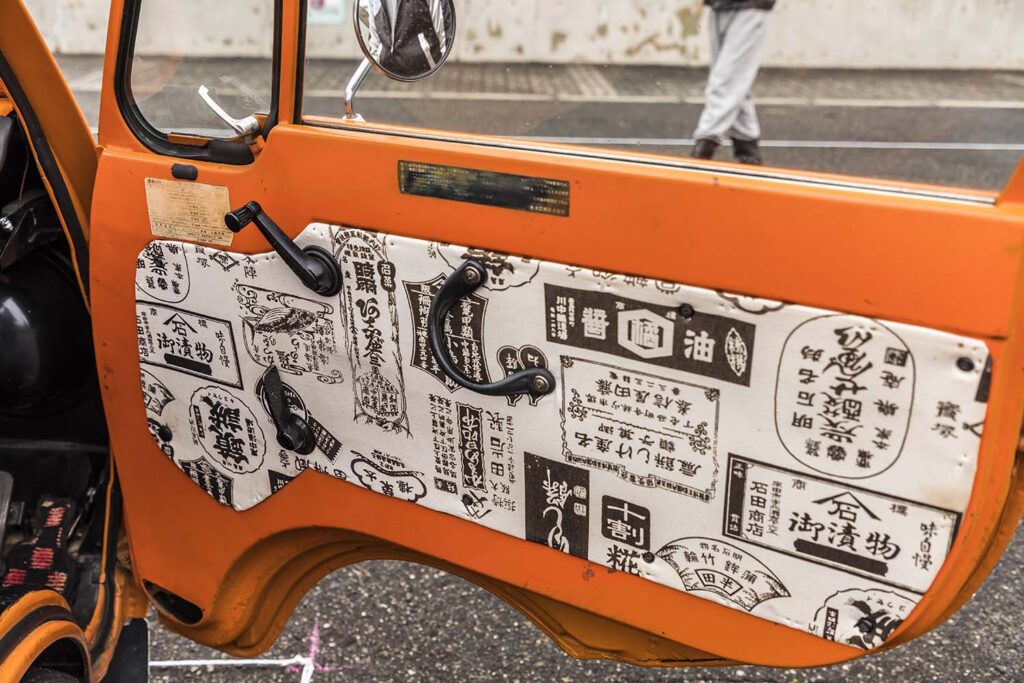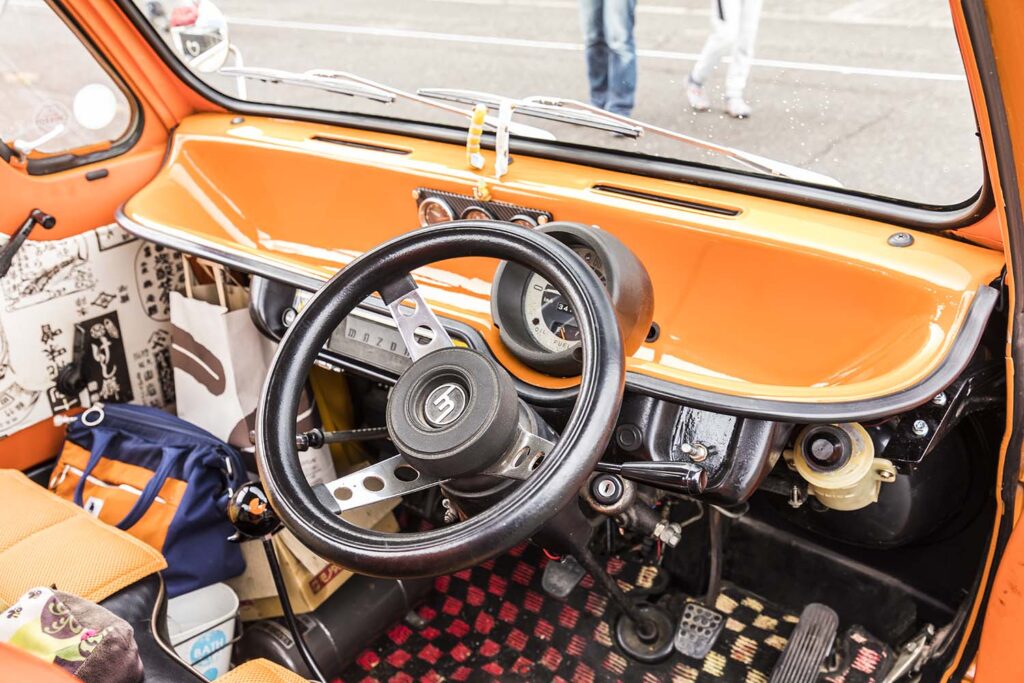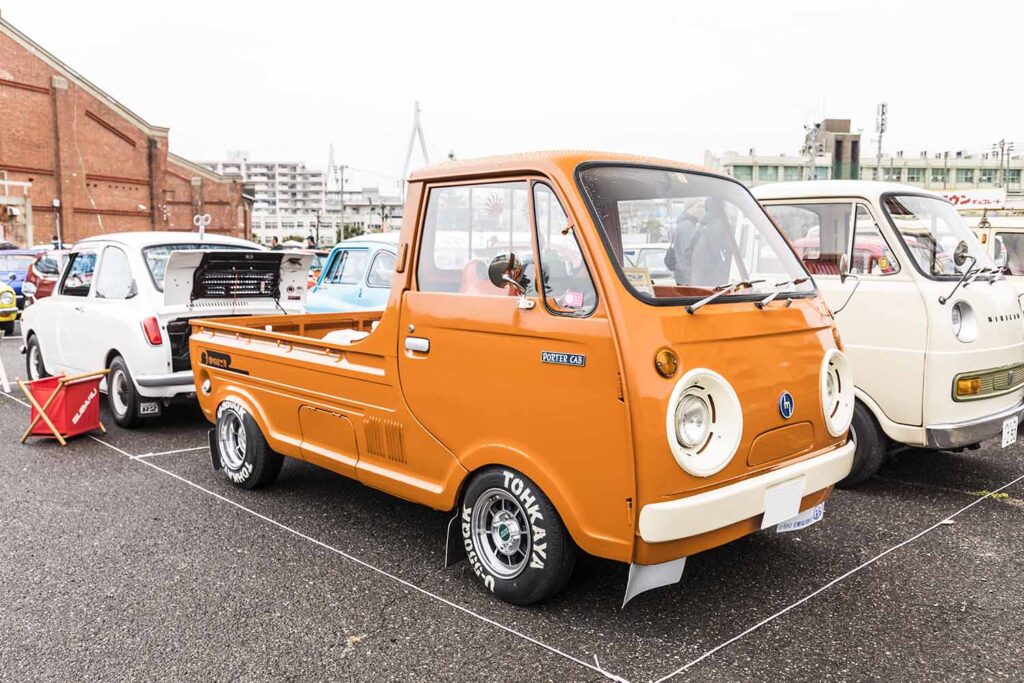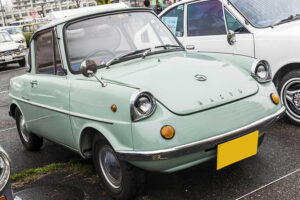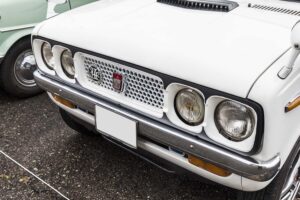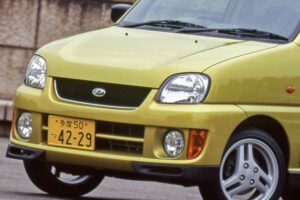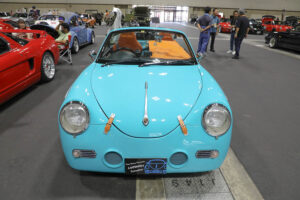The Porter Cab, nicknamed ‘Gachapin’
The Mazda ‘Porter Cab’ is unforgettable once you’ve seen its bland face. It was at the “360! All Together in OSAKA” event held in Osaka that I spotted such an adorable-looking Porter Cab. Among the many 360cc kei-cars gathered and many rare vehicles were seen, the Porter Cab was the only entry.
A valuable 360cc era vehicle
Mr. Murakami, the owner of a Mazda Porter Cab with a very cute headlight design, entered the event on his own with his friends from Ehime Prefecture, together with a 1973 Porter Cab, which was driven just after a minor change from an air-cooled engine to a water-cooled engine.
The Porter Cab was a derivative of the Porter, which debuted in 1968 as a bonnet-type pick-up or panel van, and was introduced the following year in 1969 as a cab-over style pick-up. It established the style that would later become the basic form of light trucks. The Porter Cab became a long-seller that continued to be produced until 1989, even after the original Porter ceased production in 1976, while adapting to the new 550cc standard. The 360cc era in particular has many fans for its large round headlight bezels and beautiful side skirts.
Large headlight bezels accentuate the puffy eyes
The 360cc era Porter Cab is nicknamed ‘Gachapin’ for its adorable looks, and a major reason for this is its unique front face with large round headlight bezels painted white around the headlights.
While similar in shape to later light trucks, early models featured a so-called one-sided bed with the gate opening only at the rear, the cabin and bed being an integrated structure, and side skirts on the sides. This also has the effect of making the vehicle appear lower than it actually is.
The 1973 model’s tail lamps are red/amber at the top and bottom, but this car has been replaced with an early-type all-red type by Mr. Murakami, and indicator lights have been added to the sides. If you look closely, you can also see that the headlights have also been changed to Marshall ones with the cat symbol.
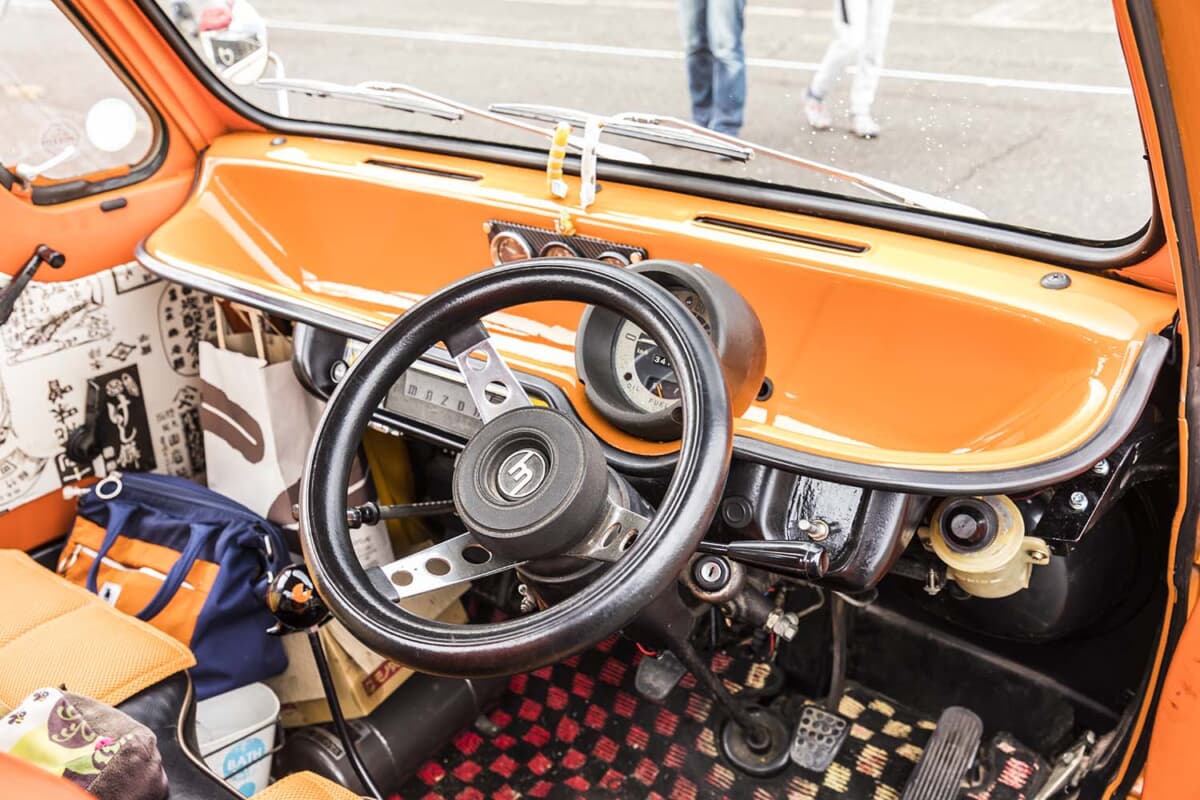
This unit was used as a fire engine
This vehicle was actually used as a fire engine at a hotel in Osaka, and although there are traces of a pump mounted on the back, it was in very good condition with low mileage. Mr. Murakami acquired the vehicle about five years ago, customizing it to his liking and enjoying it. To keep it running well, he says he has to personally stock the necessary parts and look for parts that can be used for other vehicles, but he seems to be enjoying his old car life to the fullest, including this.
By the way, the bright orange body color is not genuine, but painted Nissan ‘Cherry’ orange. The dashboard has been replaced with a simple one from the air-cooled engine era, giving it a more retro look. The seemingly non-standard ride height has been lowered by Mr. Murakami and fitted with Hayashi Racing alloy wheels front and rear. The extremely thick rears are 6.5J rims for the ‘Mini’, and the wings have been slightly modified to prevent interference with the lettering tires.
translated by DeepL





